
What I Dream About X When I Happen to Fall Asleep is placed in a simulated white cube, specifically created for the purpose of the exhibition. The all-white shrine protects a set of artworks about borderlands and mutations of identities in the year 2018. Thematically, it is all light-hearted fun and games until you stand in front of a painting of Rachel Dolezal. In 2015, Dolezal, a former Africana studies instructor and president of the National Association for the Advancement of Colored People (NAACP) chapter in Spokane, Washington, was revealed to be lying by claiming to be black, when in fact, she was not.
Outside of providing a bare canvas to hold the artworks, the simulated white cube is also an unintended commentary on how we should be purposefully bringing the contemporary art world into discussions about identity politics.
The focus on the individual, as opposed to the community, is not slowing down. Focus everywhere seems to be on setting personal boundaries as an act of self-preservation, which follows the closing of national borders as a matter of ‘national security.’ Kadlčák’s exhibition is about how thin and fluid these boundaries can be. Confusion and fear appear when what we thought was always set in stone—be it gender or race—is not so clear. Perhaps that is the reason why the exhibition has been named after a book written by the Czech prime minister, Andrej Babiš. InWhat I Dream About X When I Happen to Fall Asleep, an “X” has been purposefully added by Kadlčák: an imaginary boundary, disrupting the sweet sleep of our capitalist hero, a self-made man turned top politician. For institutional powers, the nightmares they all too often promote are made of visions of fluid, nonbinary identities.
This exhibition does not play small. In fact, it’s a bit like leaving the club at midnight only to realise it’s 6am and you are blinded by the rising sun.
Formally, What I Dream About X When I Happen to Fall Asleep is a group of works that belong together. Thematically, however, there are some disparities. While Kadlčák is inspired by rave culture, the two murals that truly stand out open up to more heavyweight themes of gender and racial identity. Curator Gabriela Kotiková tells me that the main reason for selecting Šimon Kadlčák to exhibit in Galerie Jelení were his paintings. They do not exhibit those all that often and Kadlčák’s work lightly branch out into other forms too, such as installations and sculptures.
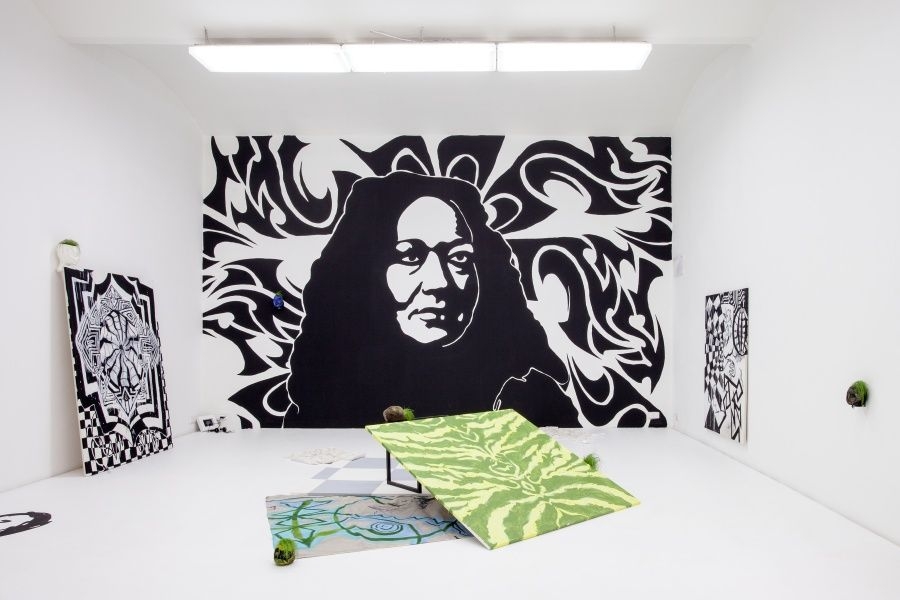
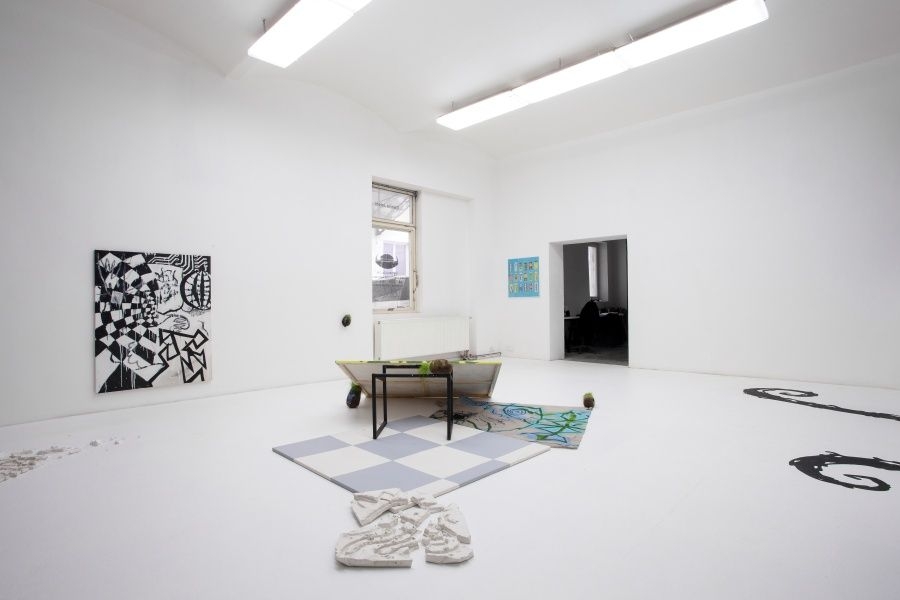

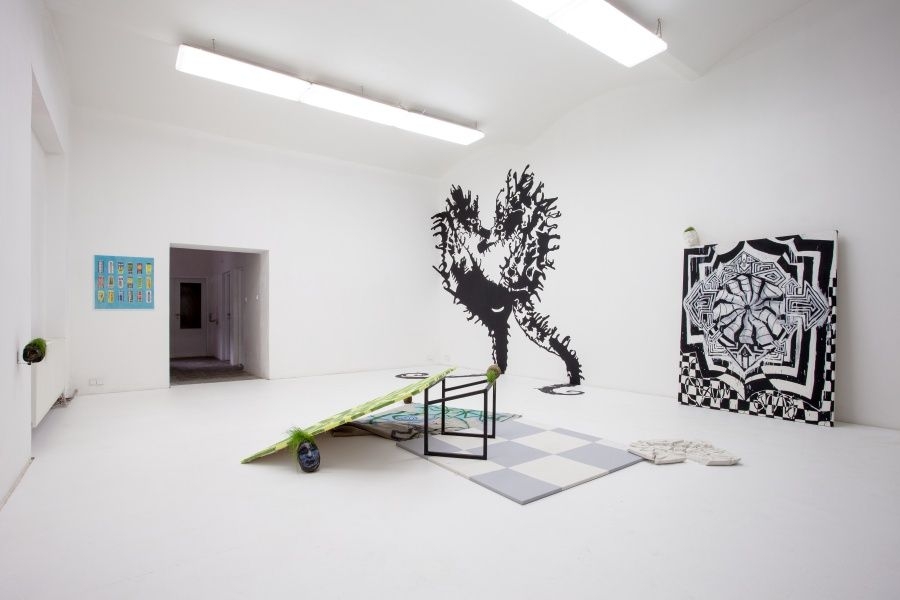
Right at the entrance is the first reference to rave culture: a colorful array of energy drinks. In contrast with other two-tone, graphic-style paintings, the cans are rendered in a softer brush and a fully realistic palette. In a vein similar to pop art, this is a glamorized depiction of readily available consumerism. Take an energy shot: either stay up all night dancing or show up to work on time, ready to be productive. It’s a portrait of a paralysis of choice. The corner across the room hides a small screen with a video game where the player shoots people dancing to music in a club. This, too, is encased in a white wooden box, to mimic the all-pervasive white cube. Facets of pop culture, open to interpretation, are certainly a thread running throughout.
Several canvases form an installation on the gallery floor, complete with small sculpted heads made out of polystyrene and cloth stuffed with soil. This is the first crossover point to the two murals purposefully hinting at fluid identities. Chives sprouting from the heads suggest growth and renewal of ideas that is necessary to combat the uncertainty we hold with regards to the identity politics. Broken white reliefs nearby look like ancient pieces that have given up under the weight of time. It is necessary to move forward: the old, the outdated is no more. The transition from the old to the new is explored in the black and white murals. First one of the mating seahorses alludes to gender transition. It is the female seahorse that impregnates the male, which in turn gives birth. Kadlčák’s seahorses take over a large portion of the wall and floor, with their tails spreading out in the shape of a heart. This is not a wholly serious commentary on gender transition, but rather a mild reminder that nature never set out to create binaries like we understand them today.
It takes a considerable amount of restraint not to walk over and immediately stare at the mural of Dolezal. It is overwhelming. Inspired by portraits of Afro-American activists Malcolm X and Martin Luther King, the work appeared to me as shocking and disquieting. In 2015, Dolezal caused an uproar after it was revealed that she was, in fact, an ethnically white woman claiming to be black, and holding several high level positions due to her adopted race.
In the Czech Republic, gossip websites and media platforms picked up on Dolezal’s story, most of them highlighting the fact that this ‘fake black woman’ is of Czech origin. The story has been largely presented as a sensational news piece. Transracialism, the practice of choosing your racial identity, has been widely determined as unacceptable, often pointing to the fact that for example Dolezal’s use of tanning to appear as having a naturally black skin tone is essentially putting on a black face.
It takes a considerable amount of restraint not to walk over immediately and stare at the mural because it is many things: overwhelming, inspired by portraits of Afro-American activists Malcolm X and Martin Luther King and for some, shocking and disquieting.
On multiple occasions, Dolezal asserted that race is a historical construct invented by white people to oppress people of colour. This is a view shared by many today who believe that pushing the agenda of ‘I don’t see race, I only see people’ somehow instantly creates equality. Unfortunately, this view also postulates that we already live in a post-racial society, where racism does not exist. This is far from the truth: in fact, structural racism is still deeply embedded within our institutions and bodies of power that influence lives of people of colour on a political, economic and personal level. Perhaps worst of all, Dolezal compares her experience of transracialism to the experiences of slaves in her autobiography.
This is not the only reason why the mural of Dolezal in Galerie Jelení is startling. The accompanying leaflet describes it as painted ‘in honour’ of Dolezal. If the artist has the freedom to assert his opinion through their artwork, we need to count in on the audiences to assert their own response too. Is it possible to disassociate yourself from your precisely formulated views and opinions when witnessing art? My first impression was that of shock but as the weeks went past, I began to see this particular work of art in a different light. Art has the potential to start a conversation, especially if it deals with people or topics we have cast out as unwanted, undesirable, perverted, or taboo for a million different reasons. Outside of certain, agreeable signifiers that may over time become generally accepted, certain artworks hold the power to forever divide us. I could name hundreds but one that specifically came to my mind was Marcus Harvey’s painting of the serial killer Myra Hindley, which, too, has incited many emotions upon being exhibited. Is it right to display a portrait of a person that abused and murdered several children? Is it politically correct that Myra’s face on this particular canvas is her infamous mugshot photo, created using casts of an infant’s hand?


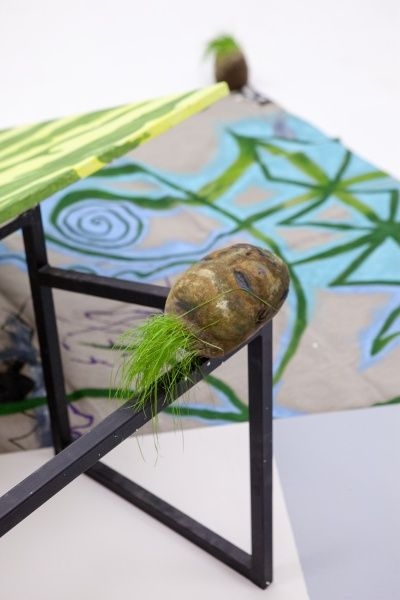
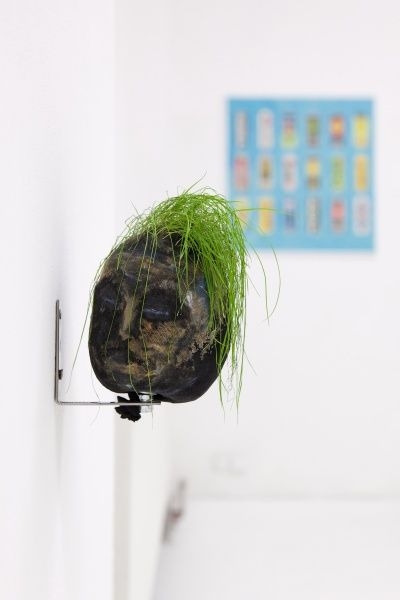
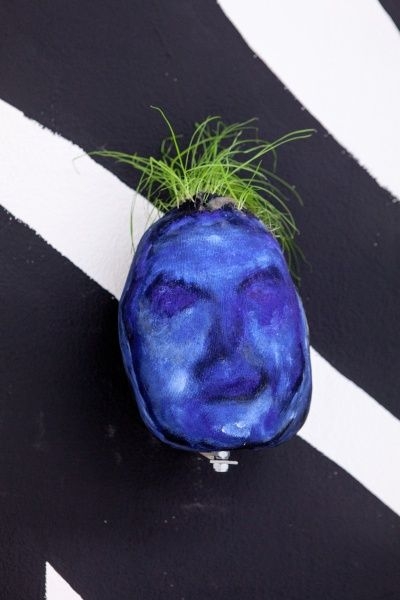

The question is: who is offended? As I stand in front of the Dolezal mural with my mind racing, some people at the exhibition opening seem perfectly indifferent. Similarly, Harvey’s painting of Myra Hindley made little offence when exhibited in the US, perhaps because the Moors murders case is not that well known outside the UK. The terrifying large scale mugshot of Hindley staring at you turns into just that: a terrifying, if slightly drunk-appearing woman staring at you.
If anything, there needs to be contextualisation and a critical conversation upon exhibiting artworks like these. Both the curator and the artist responded to me that the exhibited works intend to provide only a light hearted and ironic commentary on the theme of identity politics today, rather than start a serious inquiry.
Kadlčák’s works are promising as they balance out the formal and the political, having the ability to bridge both camps. It is a reminder that artists are indeed good at fixing up a mirror we all can look into. As of late, we have been apprehensively looking inwards in search of a safe space where we do not have to deal with uncomfortable discussions about identity politics. Here we have the start of a conversation between an artist, a gallery and an audience about race, but are we responsive enough?
If anything, there needs to be contextualization and a critical conversation about exhibiting artworks like these. Both the curator and the artist responded to me that the exhibited works intended to provide only a light-hearted and ironic commentary on the theme of identity politics, rather than anything that can be considered a serious inquiry. But surely, there is no way you are going to paint a portrait of a media anti-hero who tans and obscures their ethnic origin to fashion a black identity and expect zero response. I felt that in this regard, at least a critical platform, say, an event or a discussion on this matter would have helped the exhibition’s viewers decide where they stand. The mural of Dolezal is painted in black and white, with precise line work, just like the conversations currently taking place about race, which are all too often overly simplified and generally two-toned, with little room for nuance, unbeknownst to them as complex, multi-faceted issues.
Imprint
| Artist | Šimon Kadlčák |
| Exhibition | What I Dream About X When I Happen to Fall Asleep |
| Place / venue | Galerie Jelení |
| Dates | March 28 – April 29, 2018 |
| Curated by | Gabriela Kotiková |
| Website | cca.fcca.cz/en |
| Index | Adriana Bielková Andrej Babiš Galerie Jelení Rachel Dolezal Šimon Kadlčák |
